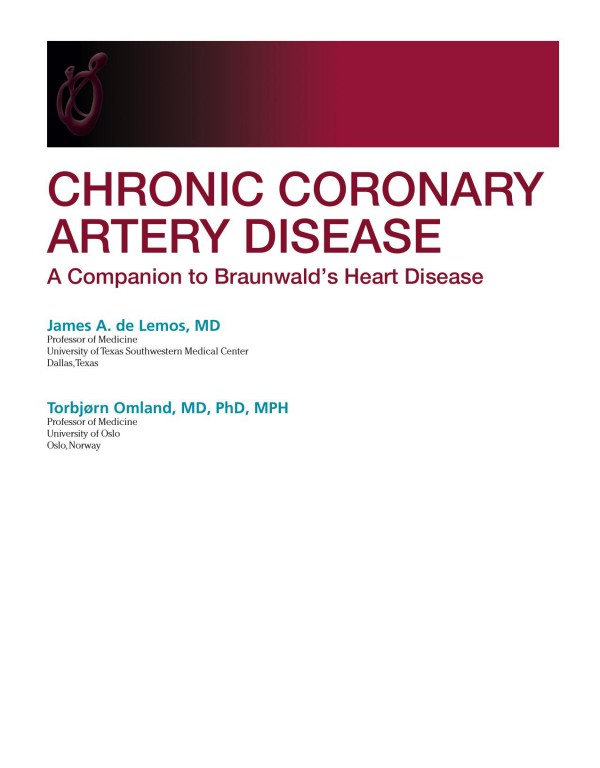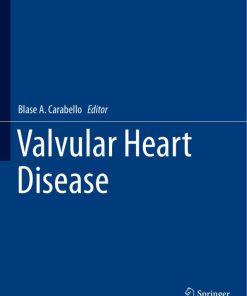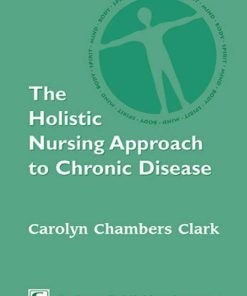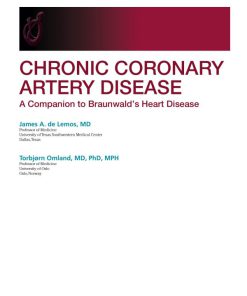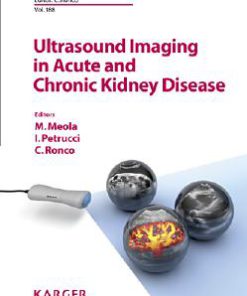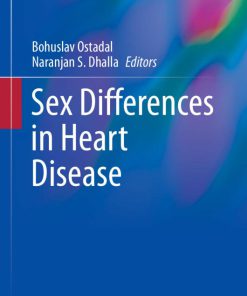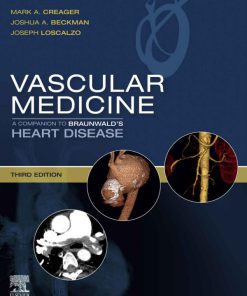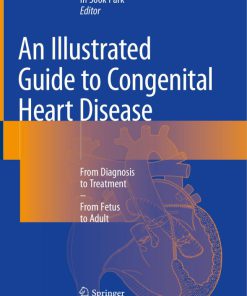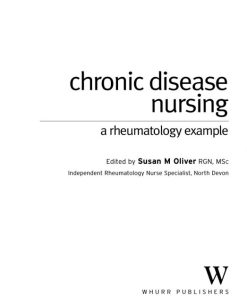Chronic Coronary Artery Disease A Companion to Braunwald Heart Disease 1st Edition by James de Lemos, Torbjørn Omland ISBN 9780323508759 0323508758
$50.00 Original price was: $50.00.$25.00Current price is: $25.00.
Authors:Chronic coronary artery disease A companion to Braunwald’s heart disease-Elsevier (2018) , Author sort:disease-Elsevier, Chronic coronary artery disease A companion to Braunwald’s heart
Chronic Coronary Artery Disease A Companion to Braunwald Heart Disease 1st Edition by James de Lemos, Torbjørn Omland – Ebook PDF Instant Download/Delivery. 9780323508759 ,0323508758
Full download Chronic Coronary Artery Disease A Companion to Braunwald Heart Disease 1st Edition after payment
Product details:
ISBN 10: 0323508758
ISBN 13: 9780323508759
Author: James de Lemos, Torbjørn Omland
Featuring expert guidance from Drs. James de Lemos and Torbjørn Omland, as well as other globally known leaders in cardiology, Chronic Coronary Artery Disease covers every aspect of managing and treating patients suffering from chronic coronary syndromes. This brand-new companion to Braunwald’s Heart Disease was designed as a stand-alone reference for physicians treating patients who present with complex, unique challenges, offering the latest information on the use of imaging modalities in diagnosis and treatment, advances in interventional and surgical approaches to revascularization, new medications to improve symptoms and outcomes in chronic CAD, and much more.
Chronic Coronary Artery Disease A Companion to Braunwald Heart Disease 1st Edition Table of contents:
Section I. Introduction
1. Epidemiology of Chronic Coronary Artery Disease
Introduction
Definitions
Risk Factors for Coronary Artery Disease
Conclusions
2. The Global Perspective of Ischemic Heart Disease
Introduction
Conclusions
Section II. Pathogenesis
3. Genetics of Coronary Atherosclerosis
Introduction
Heritability of Coronary Artery Disease
Mendelian Causes of Coronary Artery Disease
Common, Complex Forms of Coronary Artery Disease
Genetic Testing for Coronary Artery Disease in the Clinical Setting
Conclusions
4. Basic Mechanisms of Atherosclerosis
Introduction
Initiation of Atherosclerosis
Atherosclerotic Inflammation and Immune Activation
Calcification
The Vulnerable Plaque
Summary and Conclusions
5. Coronary Microvascular Dysfunction
Introduction
Functional Anatomy of the Coronary Circulation
Regulation of Myocardial Blood Flow
Mechanisms of Coronary Microvascular Dysfunction
Clinical Classification of Coronary Microvascular Dysfunction
Concluding Remarks
6. Precipitants of Myocardial Ischemia
Introduction
Clinical Predisposition
Specific Environmental Factors
Specific Cardiovascular Conditions
Conclusions
Section III. Clinical Evaluation
7. History and Physical Examination
Introduction
History
Assessment and Classification of Angina
Physical Examination
Conclusions
8. Lipid Measurements
Introduction
Traditional Lipoprotein Measurements
Measurement of Advanced Lipoproteins
Novel Lipid Tests
Lipid Targets on Treatment
Summary and Guideline Recommendations
9. Standard and Novel Biomarkers
Introduction
Biomarkers of Myocardial Injury
Biomarkers of Vascular Function and Neurohumoral Activity
Biomarkers of Renal Function
Lipid Biomarkers
Inflammatory Biomarkers
Novel, Omics-Based Biomarkers
Conclusions
10. ECG and Standard Exercise Stress Testing
Introduction
Indications for Electrocardiographic Testing
Exercise Treadmill Testing
Technical Aspects of Stress Testing
Stress Testing in Patients with Coronary Artery Disease
Prognosis
Therapeutic Efficacy
Preoperative Evaluation for Noncardiac Surgery
Conclusions
11. Echocardiography
Introduction
Detection of Coronary Artery Disease
Assessment of Left Ventricular Dysfunction
Structural Complications Due to Coronary Artery Disease
Summary
12. Nuclear Imaging and PET
Fundamentals of Radionuclide Imaging
Comprehensive Evaluation of Coronary Artery Disease
Patient-Centered Applications of Radionuclide Imaging in Coronary Artery Disease
Management of CAD
Myocardial Ischemia and Viability Imaging to Guide Revascularization in Patients with Ischemic LV Dysfunction
Cost-Effectiveness of Radionuclide Imaging in the Management of Stable Ischemic Heart Disease
Managing Radiation Exposure from Radionuclide Imaging
Potential Opportunities for Targeted Molecular Imaging
Summary
13. CT and MRI
Introduction
Cardiac Computed Tomography
Magnetic Resonance Imaging
CT and MRI: Guidelines
Conclusions
14. Invasive Testing
Coronary Angiography
Coronary Flow Reserve
Fractional Flow Reserve
Intravascular Imaging
Index of Microcirculatory Resistance
Evaluation of Chest Pain and no Obstructive Coronary Artery Disease
Conclusion
15. Putting It All Together: Which Test for Which Patient?
The Challenge of Noninvasive Test Selection for Stable Chest Pain
Overview: Patient Selection for Noninvasive Testing
General Approach to Choosing a Noninvasive Test
A New Standard for Pragmatic Imaging Trials: Promise and Scot-Heart
Important Downstream Sequelae of Noninvasive Testing
Noninvasive Diagnostic Testing Considerations for Special Populations
Emerging Concepts: Beyond the Siloed Choice of a Functional or Anatomic Strategy
Future Horizons for Noninvasive Imaging and CAD
A Proposed Approach for Selecting the Optimal Noninvasive Test for CAD Diagnosis
Summary
Section IV. Management
16. Goals of Therapy
Improving Survival and Prevention of Major Adverse Cardiac Events
Improving Symptoms and Quality of Life
Special Populations
Conclusions: Developing an Individualized Plan of Care
17. Global Risk Assessment
Introduction
Prognosis Overall and in Subgroups
Prognosis in Subgroups
Tools for Risk Assessment
Multivariable Risk Prediction Models in Chronic Coronary Artery Disease
Summary
18. Lifestyle Interventions
Smoking
Nutrition
Physical Activity
Cardiac Rehabilitation
Uptake and Adherence to Lifestyle Changes and Cardiac Rehabilitation
19. Obesity and the Obesity Paradox
Introduction
Mechanisms Linking Obesity with Increased CHD Risk
Association of Obesity with CVD Events
Impact of Obesity on Prognosis in CHD: The Obesity Paradox
Challenges with BMI as a Measure of Adiposity
Potential Reasons for an Obesity Paradox in CHD
Impact of Weight Loss on CHD
Prevention of Obesity and Weight Gain
Pharmacologic Treatment of Obesity
Bariatric Surgery
Conclusion
20. The Medical Treatment of Stable Angina
Introduction
Traditional Anti-Ischemic Therapy
Novel Anti-Ischemic Therapy
Investigational Anti-Ischemic Therapy
Comparative Effectiveness of Drug Classes Singly and in Combination in the Treatment of Stable Angina
Guidelines for the Medical Management of Stable Angina
Conclusion
21. Antiplatelet and Anticoagulant Drugs
Introduction
Antiplatelet Agents
Anticoagulants
Future Perspectives
Conclusions
22. Prevention of Sudden Cardiac Death
Introduction
Definition and Epidemiology
Pathophysiology
Secondary Prevention of Sudden Cardiac Death
Primary Prevention of Sudden Cardiac Death
Summary of Recommendations for Implantable Cardioverter Defibrillator Implantation for Prevention of Sudden Cardiac Death
Conclusions
23. Revascularization Approaches
Introduction
Goals of Treatment
Conclusions
24. Managing Chronic Coronary Artery Disease in Patients with Diabetes
Introduction
Cardiovascular Risk in Type 1 Diabetes
Cardiovascular Risk in Type 2 Diabetes Mellitus
Risk Factor Management
Coronary Revascularization in Patients with Cad and Diabetes
Optimal Medical Treatment Versus Coronary Revascularization
Specific Characteristics of Revascularization Therapy in Patients with Insulin-Dependent and Patients with Non–Insulin-Dependent Diabetes
Clinical Decision-Making in Patients with Multivessel Disease with Diabetes
25. Angina in Patients with Evidence of Myocardial Ischemia and No Obstructive Coronary Artery Disease
Introduction
Terminology
Epidemiology
Pathophysiology
Diagnostic Testing
Therapeutic Strategies
Conclusions
26. Depression, Anxiety, and Stress
Introduction
Professional Society Guidelines/Advisories/Statements
Epidemiology
Biologic Mechanisms
Behavioral Mechanisms
Treatment Options
Should Professional Society Guidelines/Advisories/Statements be Followed?
Practical Considerations for Treating Comorbid Coronary Heart Disease and Depression, Anxiety, or Stress
27. Refractory Angina
Introduction
Drug Therapy
Interventional Therapies
Mental Stress–Induced Myocardial Ischemia
Refractory Vasospastic Angina
Refractory Angina in Patients with Coronary Microvascular Dysfunction
Noninvasive Therapies
How to Approach Patients with Refractory Angina
Section V. Prevention
28. Primary Prevention of Atherosclerotic Cardiovascular Disease
Encourage Long-Term Adherence
Overview of Primary Prevention Priorities by Age Group
Lifestyle Recommendations
Cholesterol Management
Blood Pressure
Aspirin
Conclusions
29. Screening for Atherosclerotic Cardiovascular Disease in Asymptomatic Individuals
Introduction
Concluding Thoughts on Screening the Asymptomatic Individual
30. Secondary Prevention of Coronary Artery Disease
Introduction
Risk Factor Management
Optimal Pharmacologic Therapy
Additional Preventive Strategies
Conclusions
Index
People also search for Chronic Coronary Artery Disease A Companion to Braunwald Heart Disease 1st Edition:
chronic coronary insufficiency with essential hypertension
chronic coronary disease
chronic coronary insufficiency with essential hypertension icd 10
coronary artery disease is a chronic condition

